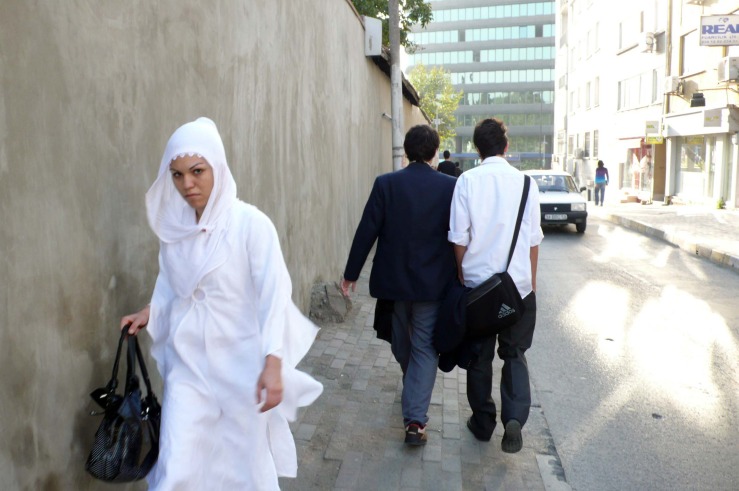Children's story hour
He was in Morocco on 9/11. He didn't take possession of that event. Fate said hello, hah, hah, hah.
After two months he shifted to Cadiz, Spain with Omar, a blind Touareg writer.
His forward observer position allowed him to witness young and old sexually repressed Catholic couples steal kisses at night under yellow street lamps. They hid in recessed Moorish doorways getting a quick feel. Passion with a purpose.
Meals with a Gypsy family timed down Gades days with a simple breakfast of toast, butter, jam or muesli, a lunch of thick soup, fresh salad, bread, water, and a main course at 2:30 p.m. He read Don Quixote...true history...the crux of fiction, harder to read than fantasy. The world of floating images.
It was shifts, frequencies, and transitions moving from pre-terror North America to North Africa and old Southern European worlds. Everyone was connected by history in the making: Phoenician, Romans, Berbers haunting conquests, establishing bases in Europe, Moors fighting Christians, morphing cellular structures.
In Andalucía citizens exchanged belief windows, values, attitudes, construction projects, and 3,000 years of icon free Arabian art. It was about agriculture, water, light, form, and substance. Equality was the word at a Muslim burial exhibit at the Mondragon Palace in Ronda.
Cadiz was founded by Phoenicians in 1100 BC. They called it Gadir and traded amber and tin. It was a Roman navel base.
Greeks and Phoenicians introduced the potter’s wheel, writing, olive tree, donkey and hen to Spain. They replaced iron with bronze. Metals became currencies. People developed agriculture as growing populations built walls, towers, and castles for security. Romans contributed aqueducts, temples, theaters, circuses, and baths. They gave the Iberian Peninsula Castilian language based on 2,000-year old Latin.

Their desire, wanderlust and greed established communities to satisfy their impulse for cuisine, sex, music, and trade expanded their nation-state.
The Museo de Cadiz was filled with Roman artifacts. Humans wandered through archeological epoch discoveries from settlements in Gades along the coast extending inland to Seville and Cordoba.
Travellers discovered estuaries, towns, villages, isolated tight white pueblos and rooms full of coins, maps, heads, pottery and faces. They discovered vases, dynasties, ruins, Roman legion armor, burial sites, aqueduct maps, temples, theaters, masks, busts, sculptures, marble, glass, and utensils.
Three million-year old human remains slept in stoned chambers. Sharp sewing bones rested in dust.

Scientists collected anger, desire, jealousy, pride, and ignorance. Minute grains of mica. Archaeologists and mobile blood donation units explored rain forests and hacked through Angkor Wat jungles discovering isolated oceanic islands above simmering volcanic eruptions.

 Share Article
Share Article 







